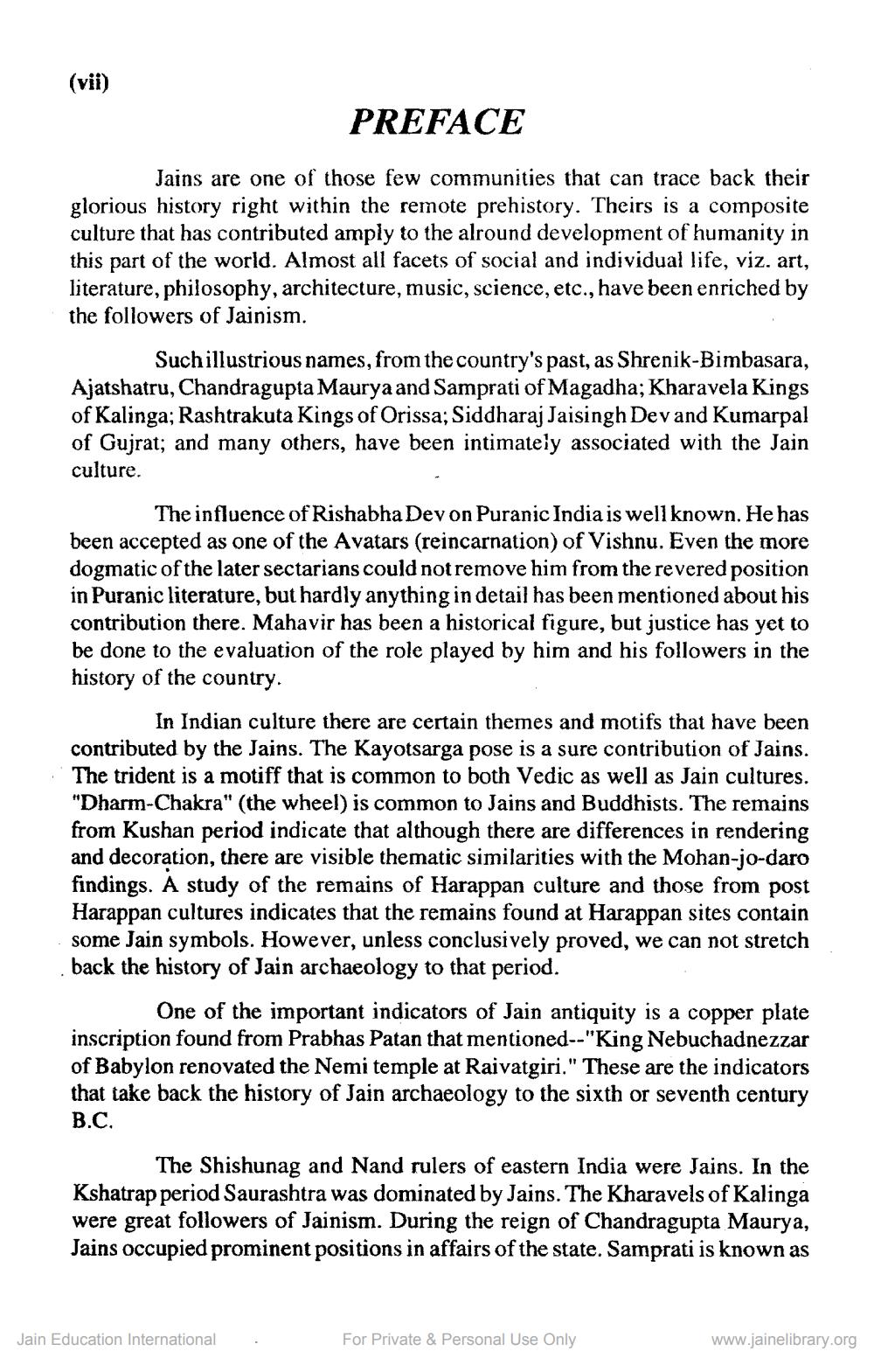Book Title: Jainism in India Author(s): Ganesh Lalwani Publisher: Prakrit Bharti Academy View full book textPage 8
________________ (vii) PREFACE Jains are one of those few communities that can trace back their glorious history right within the remote prehistory. Theirs is a composite culture that has contributed amply to the alround development of humanity in this part of the world. Almost all facets of social and individual life, viz. art, literature, philosophy, architecture, music, science, etc., have been enriched by the followers of Jainism. Suchillustrious names, from the country's past, as Shrenik-Bimbasara, Ajatshatru, Chandragupta Maurya and Samprati of Magadha; Kharavela Kings of Kalinga; Rashtrakuta Kings of Orissa; Siddharaj Jaisingh Devand Kumarpal of Gujrat; and many others, have been intimately associated with the Jain culture The influence of Rishabha Dev on Puranic India is well known. He has been accepted as one of the Avatars (reincarnation) of Vishnu. Even the more dogmatic of the later sectarians could not remove him from the revered position in Puranic literature, but hardly anything in detail has been mentioned about his contribution there. Mahavir has been a historical figure, but justice has yet to be done to the evaluation of the role played by him and his followers in the history of the country. In Indian culture there are certain themes and motifs that have been contributed by the Jains. The Kayotsarga pose is a sure contribution of Jains The trident is a motiff that is common to both Vedic as well as Jain cultures. "Dharm-Chakra" (the wheel) is common to Jains and Buddhists. The remains from Kushan period indicate that although there are differences in rendering and decoration, there are visible thematic similarities with the Mohan-jo-daro findings. A study of the remains of Harappan culture and those from post Harappan cultures indicates that the remains found at Harappan sites contain some Jain symbols. However, unless conclusively proved, we can not stretch back the history of Jain archaeology to that period. One of the important indicators of Jain antiquity is a copper plate inscription found from Prabhas Patan that mentioned--"King Nebuchadnezzar of Babylon renovated the Nemi temple at Raivatgiri." These are the indicators that take back the history of Jain archaeology to the sixth or seventh century B.C. The Shishunag and Nand rulers of eastern India were Jains. In the Kshatrap period Saurashtra was dominated by Jains. The Kharavels of Kalinga were great followers of Jainism. During the reign of Chandragupta Maurya, Jains occupied prominent positions in affairs of the state. Samprati is known as Jain Education International For Private & Personal Use Only www.jainelibrary.orgPage Navigation
1 ... 6 7 8 9 10 11 12 13 14 15 16 17 18 19 20 21 22 23 24 25 26 27 28 29 30 31 32 33 34 35 36 37 38 39 40 41 42 43 44 45 46 47 48 49 50 51 52 53 54 55 56 57 58 59 60 61 62 63 64 65 66 67 68 69 70 71 72 73 74 75 76 77 78 79 80 81 82 ... 150
